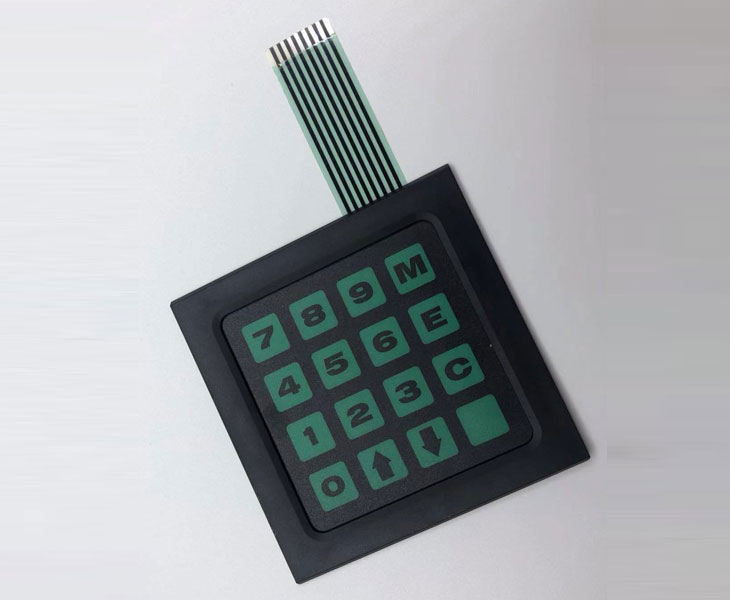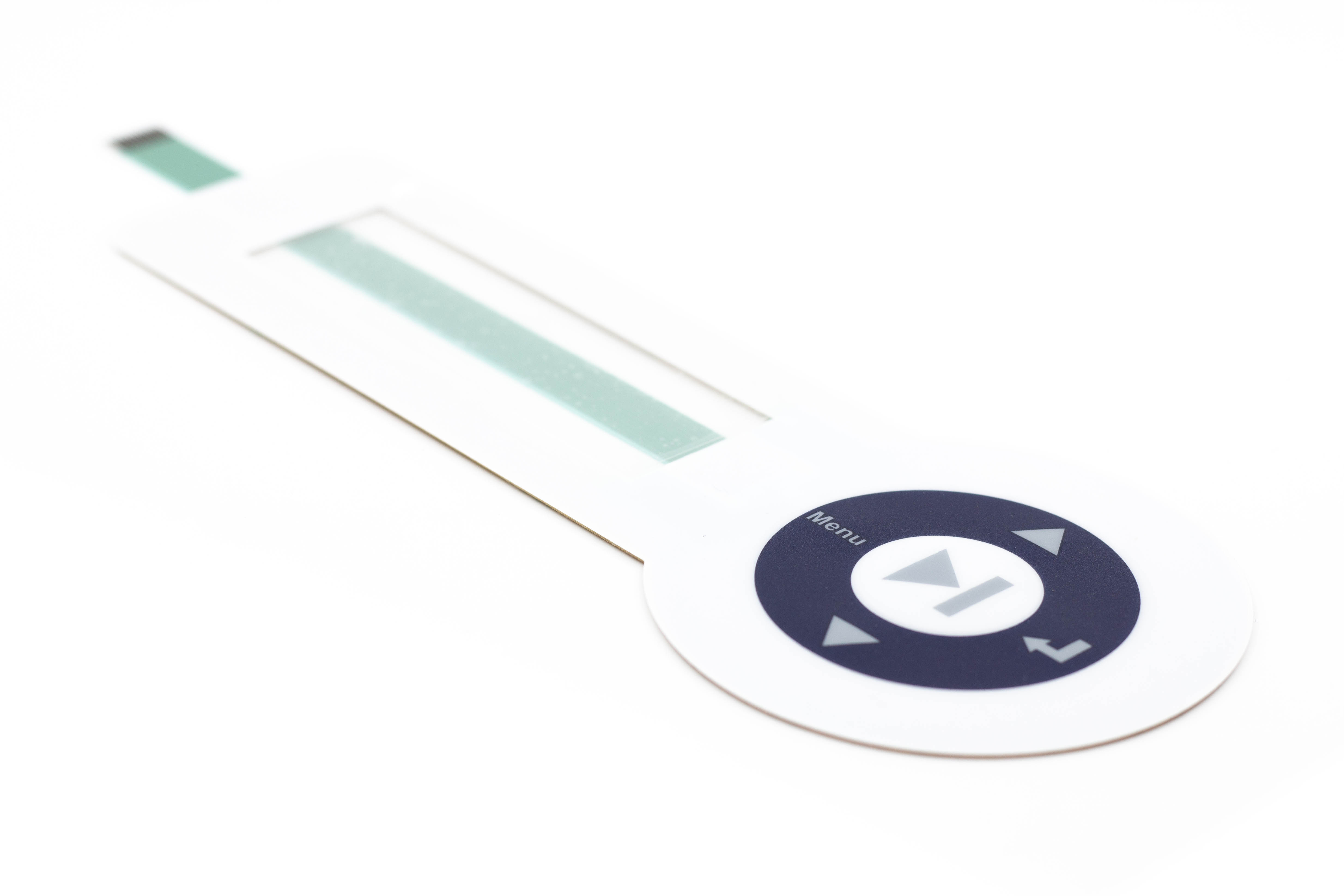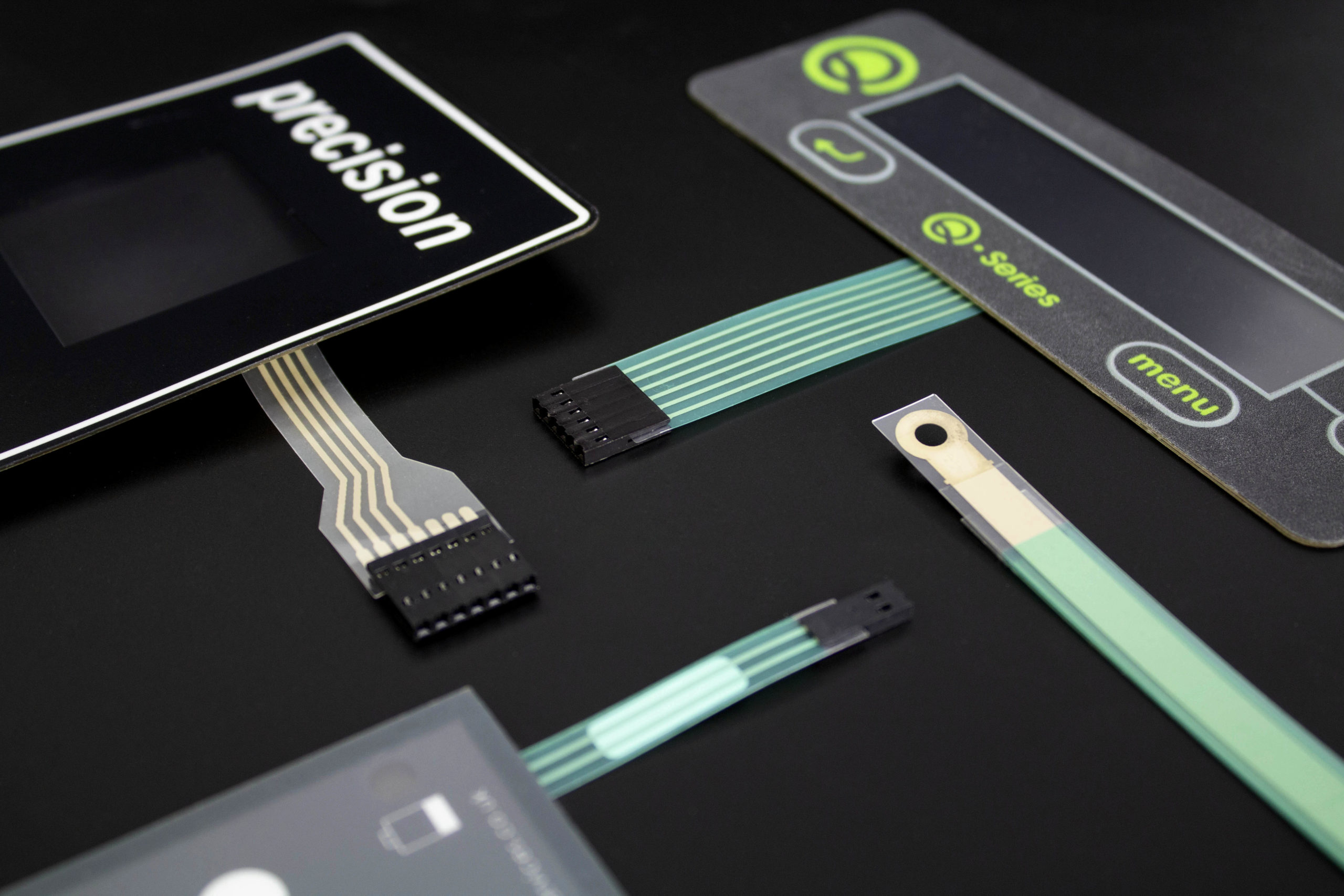The Production Process Behind Membrane Layer Change: What You Required to Know
The manufacturing procedure behind membrane switches over combines cautious layout, product choice, and quality assurance. It begins with understanding the details of membrane button layout and proceeds with different stages, consisting of material options and printing techniques. Each phase plays an important function in ensuring functionality and durability. The complexities of layer building and the extensive screening standards might expose understandings that are not instantly evident. What exists past these foundational elements?
Comprehending Membrane Layer Switch Over Design
Membrane switches may appear easy at very first glimpse, their style entails detailed factors to consider that assure capability and durability. The design process begins with an extensive understanding of individual demands, including the interface's intended application and environmental factors. Ergonomics is an essential element, as the layout must facilitate ease of usage while making certain that responsive comments satisfies user expectations.Moreover, the layering of components, such as visuals overlays, glue layers, and conductive traces, have to be specifically engineered. membrane switch. This layered configuration not just affects the switch's responsiveness but also influences its durability. Interest is provided to the securing strategies utilized to protect versus wetness and dust, which can endanger performance. Additionally, layout considerations encompass aesthetic appeals, where color plans and visual clarity enhance customer experience. Ultimately, the layout of membrane layer switches equilibriums performance, user experience, and durability, making certain that they satisfy the needs of different applications efficiently
Products Used in Membrane Layer Change Production
When choosing products for membrane button manufacturing, it is necessary to consider both efficiency and sturdiness. The primary materials consist of polyester and polycarbonate films, which supply flexibility and stamina. These films are commonly coated with sticky to assure proper bonding to substratums. Conductive inks, typically composed of silver or carbon, are essential for developing electric links within the switch, enabling for reliable operation.Additionally, a protective layer, such as a tough coat, is often put on boost scratch resistance and durability. The selection of backing product, such as acrylic or foam, can significantly affect the button's tactile feel and general customer experience. Moreover, different ecological factors, including temperature and moisture, need to guide material choice to ensure peak efficiency in details applications. Eventually, the ideal mix of products adds to the membrane layer button's capability and life-span, making educated selections essential for manufacturers.
The Printing Process: Creating Graphics and Text
The printing process in membrane layer button production plays a substantial duty in generating high-grade graphics and message. Numerous visuals style methods are utilized to ensure visual appeal and capability, while mindful ink option techniques are necessary for toughness and efficiency. Comprehending these elements is fundamental for attaining ideal outcomes in membrane switch layout.
Graphic Design Techniques
Graphic style methods play a crucial role in the printing procedure of membrane layer switches, as they specify how graphics and message will eventually appear on the end product. Reliable graphic layout includes the strategic usage of shades, layouts, and typefaces to boost readability and visual allure. Designers usually utilize vector graphics for scalability, making certain that images continue to be sharp at various sizes. In addition, attention to comparison and alignment is important, as it affects user interaction and visual top quality. The incorporation of branding aspects, such as logo designs, should be managed with like maintain brand name honesty. Overall, thoughtful graphic layout strategies contribute significantly to the capability and attractiveness of membrane buttons, influencing customer experience and product performance.
Ink Choice Approaches
Picking the appropriate ink is vital for attaining the wanted aesthetic quality and sturdiness in membrane layer button manufacturing. Numerous ink kinds are utilized, including solvent-based, water-based, and UV-curable inks. Each type provides unique attributes, such as resistance, flexibility, and adhesion to environmental factors. Solvent-based inks are frequently favored for their sturdiness and dynamic colors, while water-based inks are much more eco-friendly however may have restrictions in bond. UV-curable inks offer rapid curing and robust efficiency. In addition, shade matching methods ensure that the selected inks align with layout requirements. Inevitably, the option of ink should consider factors such as application method, substratum compatibility, and end-use needs to accomplish exceptional cause membrane layer button graphics and message.
Layer Building and Assembly

Material Selection Process
A cautious choice of materials is necessary in the production procedure of membrane layer buttons, as it straight affects performance and longevity. The key products made use of consist of polyester, polycarbonate, and numerous conductive inks. Polyester is usually preferred for its superb resistance to chemicals and abrasion, making it ideal for rough settings. Polycarbonate, on the various other hand, supplies remarkable clearness and influence resistance, which is helpful for applications requiring exposure and robustness. Conductive inks, typically composed of over at this website silver or carbon, are vital for developing trusted electrical pathways. Additionally, the selection of glue materials influences the total stability of the switch - membrane switch. Examining aspects such as ecological direct exposure, tactile feedback, and visual requirements guides producers in selecting the most effective products for their details applications
Layer Attachment Techniques
Adhering layers in membrane button building is an important procedure that assures functionality and durability. Various adhesion techniques are employed to protect excellent bonding in between layers, which generally include using adhesives, heat, and stress. Pressure-sensitive adhesives (PSAs) are commonly made use of for their convenience of application and instant bonding capacities. Additionally, thermal bonding methods can be applied, where warmth is utilized to trigger adhesive homes, protecting a strong bond. The choice of attachment technique greatly depends on the products entailed and the certain application requirements of the membrane layer button. Proper placement and consistent application of adhesives are essential to protect against flaws, protecting the switch operates effectively throughout its desired lifespan.
High Quality Control Actions
Ensuring quality assurance during the layer construction and setting up of membrane buttons is important for preserving performance and integrity. This process typically involves a number of critical steps, consisting of thorough evaluations at each phase of production. Producers utilize advanced testing methods, such as peel examinations and adhesion analyses, to confirm the integrity of layer bonds. In addition, visual evaluations are performed to determine any type of issues in printing or material inconsistencies. Environmental problems, such as temperature and humidity, are thoroughly kept track of to assure ideal healing and attachment. Additionally, regular calibration of devices aids maintain accurate production requirements. By applying these quality assurance actions, manufacturers can considerably minimize the danger Visit Your URL of item failure, guaranteeing that the final membrane layer changes meet the needed specs and client assumptions.
Testing and Top Quality Control Procedures

Developments in Membrane Change Innovation
As developments in modern technology proceed to advance, membrane layer buttons are benefiting from innovative developments that improve their capability and customer experience. One notable development is the assimilation of capacitive touch modern technology, which allows for more instinctive and responsive customer interfaces. This shift not only improves appearances however also reduces mechanical deterioration, extending the lifespan of the switches.Additionally, developments in visuals overlay products have resulted in enhanced resilience and resistance to environmental elements such as wetness and UV light. These products now provide boosted clearness and illumination, further boosting the aesthetic appeal.Furthermore, the incorporation of smart modern technology is changing membrane layer switches right into interactive control board, allowing connection with IoT tools. This connection promotes a smooth customer experience, leading the way for applications in different sectors, from health care to consumer electronic devices. Jointly, these innovations placement membrane layer switches over as important parts in modern tool design.
Often Asked Concerns
How Lengthy Does the Membrane Change Manufacturing Process Take?
The duration of the membrane layer button production procedure can vary considerably. Variables such as intricacy, products made use of, and production quantity impact timelines, with typical manufacturing varying from a couple of days to numerous weeks for conclusion.
What Are the Typical Applications for Membrane Layer Buttons?
Membrane switches are generally used in various sectors, consisting of automobile controls, home appliances, medical gadgets, and consumer electronics (membrane switch). Their flexibility and durability make them perfect for applications needing easy to use interfaces and reliable efficiency in varied atmospheres
Can Membrane Layer Changes Be Personalized for Particular Requirements?

What Is the Life-span of a Typical Membrane Layer Change?
The life expectancy of a common membrane layer button differs, but typically, it ranges from 1 to 5 million cycles. Elements such as use, environment, and worldly top quality significantly influence durability and general performance over time.

Are Membrane Changes Environmentally Pleasant?
The environmental friendliness of membrane layer switches differs. Some products used may not be recyclable, while others can be environment-friendly. The general influence relies on manufacturing techniques and products, demanding mindful consideration during selection and disposal. The production process behind membrane changes combines careful design, material option, and quality control. It begins with understanding the intricacies of membrane button layout and progresses with various stages, consisting of product options and printing techniques. When choosing materials for membrane layer switch production, it is vital to contemplate both performance and longevity. A mindful selection of products is necessary in the manufacturing process of membrane buttons, as it directly influences performance and sturdiness. The selection of bond approach mostly depends on the products involved and the particular application requirements of the membrane layer switch.
Comments on “Exploring membrane switch applications in harsh environments”